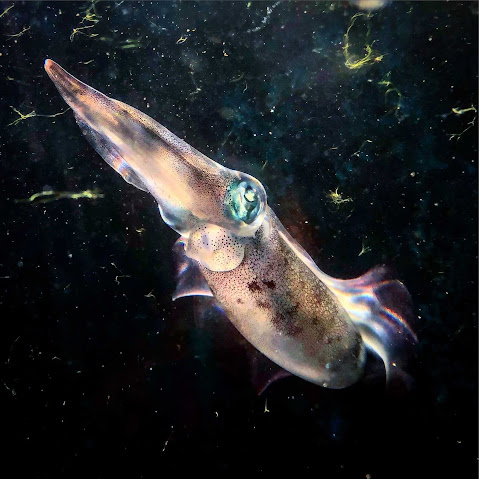While octopus and cuttlefish are famous for their use of camouflage to match the color of the substrate, a third type of cephalopod—the squid—has never been reported displaying this ability. Now, in a study published in Scientific Reports, scientists from the Physics and Biology Unit at the Okinawa Institute of Science and Technology Graduate University (OIST) have shown that squid can and will camouflage to match a substrate as a way of avoiding predators. This work opens up research avenues on how squid see and perceive the world around them. Furthermore, it sheds light on their behavior, and thus could go on to inform conservation initiatives.
“Squid usually hover in the open ocean but we wanted to find out what happens when they move a bit closer to a coral reef or if they’re chased by a predator to the ocean floor,” explained one of the three first authors, Dr. Ryuta Nakajima, OIST visiting researcher. “If substrate is important for squid to avoid predation than that indicates that increases or decreases in squid populations are even more tied to the health of coral reef than we thought.”
Previous studies on cephalopod camouflage have mostly been conducted on cuttlefish and octopus. Squids, as an animal that tends to live in the open ocean, are notoriously hard to keep in captivity and so have been avoided for this kind of research. But, since 2017, the scientists in the OIST’s Physics and Biology Unit have been culturing a species of oval squid in captivity.
















.jpg)
